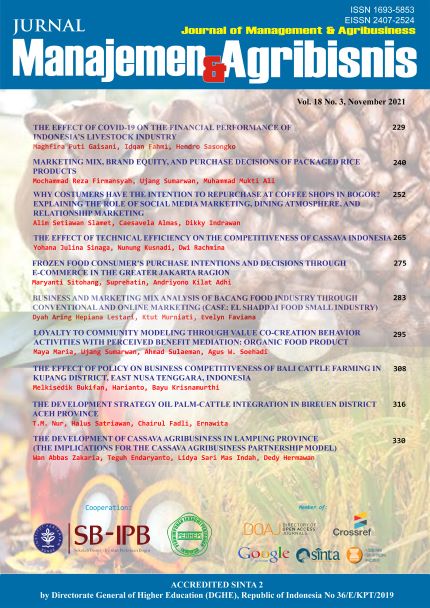Frozen Food Consumer’s Purchase Intentions and Decisions Through E-Commerce in The Greater Jakarta Ragion
Abstract
The rise of e-commerce provides consumers more opportunities to purchase agricultural and food products including frozen food. This study aims is to examine the effects of different factors on consumers’ intention and decision on purchasing frozen food through e-commerce based on theory of planned behavior (TPB) and technology acceptance model (TAM). This study used the primary data from online survey of 200 respondents in Greater Jakarta who purchased frozen food through e-commerce. Data were analyzed using partial least squares-structural equation modelling (PLS-SEM). The results showed that perceived usefulness and perceived ease of use e-commerce have a positive influence on attitudes. Then attitudes, subjective norms, and behavior control had a significant positive effect on purchase intention. The results also confirmed that consumers’ purchasing decisions on frozen food affecting by their purchase intention.
Keywords: : e-commerce, frozen food, purchase intention, TAM, TPB
Authors
Authors who publish with this journal agree to the following terms:
- Authors retain copyright and grant the journal right of first publication with the work simultaneously licensed under a Creative Commons Attribution License that allows others to share the work with an acknowledgement of the work's authorship and initial publication in this journal.
- Authors are able to enter into separate, additional contractual arrangements for the non-exclusive distribution of the journal's published version of the work (e.g., post it to an institutional repository or publish it in a book), with an acknowledgement of its initial publication in this journal.
- Authors are permitted and encouraged to post their work online (e.g., in institutional repositories or on their website) prior to and during the submission process, as it can lead to productive exchanges, as well as earlier and greater citation of published work (See The Effect of Open Access).

